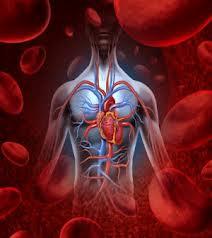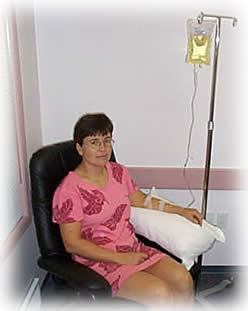 IF you are searching for information about atherosclerosis, what it is, why it is something to avoid or if you have been diagnosed with it HOW you can get rid of it you have found the right page and right site. So grab a cup of coffee, get comfortable and invest some time learning about how you can remove atherosclerosis and feel good again.
IF you are searching for information about atherosclerosis, what it is, why it is something to avoid or if you have been diagnosed with it HOW you can get rid of it you have found the right page and right site. So grab a cup of coffee, get comfortable and invest some time learning about how you can remove atherosclerosis and feel good again.
Here’s the whole secret …
Reverse atherosclerosis and you also reverse coronary artery disease. Since atherosclerosis also causes peripheral and carotid artery disease it is important to note that when you reverse atherosclerosis you also reverse all artery disease associated with atherosclerosis. So …
What Is Atherosclerosis?
Atherosclerosis (ath”er-o-skleh-RO’sis) comes from the Greek words athero (meaning gruel or paste) and sclerosis (hardness). It’s the name of a process in which deposits of fatty substances, cholesterol, cellular waste products, calcium and other substances build up inside the inner lining of an artery. These deposits are known as arterial plaque. This arterial plaque clogs arteries and can decrease even stop blood flow.
Atherosclerosis, often called hardening of the arteries, is an insidious form of heart disease that sneaks up on its victim like a thief in the night with a large majority of people never realizing they have it until it’s to late. In fact, the first sign that you have atherosclerosis may be a stroke or heart attack.
Atherosclerosis is showing up in the western hemisphere populations at an early age. Due to the western diet which lacks good nutrition and fiber, lack of exercise and the growing rate of obesity it is no longer uncommon to find 20 and 30 something’s with atherosclerosis, even a first heart attack or stroke.
If you are 30 + it may definitely be a good idea to start paying attention to your long-term health by learning more about atherosclerosis and what you can do now to either prevent it or reverse heart disease should you already have it.
 WHY Be Concerned About Arterial Plaque?
WHY Be Concerned About Arterial Plaque?
Atherosclerosis causes serious complications and arterial plaque often enlarges to the point it begins to curb or even stop blood flow to cellular tissue. This can present in several areas with each creating its own set of unique complications some of which may overlap because in many instances atherosclerosis presents in more than one location at the same time.
Coronary Artery Disease
When plaque builds up and narrows coronary arteries it can cause hypertension (high blood pressure), chest pain, heart arrhythmia, heart attack, heart failure and disability or death. Coronary artery disease is the complication of atherosclerosis that ends the most lives.
Stroke and TIA’s
Strokes and mini-strokes (TIA’s) occur when the build up of plaque narrows or clogs an artery such as the carotid artery found on both sides of the neck or one of the smaller arteries within the brain itself. TIA’s (transient ischemic attacks) or what many people refer to as “mini-strokes” which in reality are actually strokes that resolve rapidly on their own with resolution of symptoms in minutes and return to almost complete functionality within 24 hours. TIA’s are associated with dementia due to small amounts of damage but are also signs of what is to come.
Peripheral Arterial Disease
When atherosclerosis occurs in the legs or torso it is known as peripheral artery disease or PAD. If a renal artery (kidney) becomes blocked it could damage your kidney(s) to the point you suffer heart failure, need dialysis to survive or both. PAD can also create blood clots that travel when they break off. If one travels to a coronary artery and blocks it you have a heart attack. When one travels to the brain you of course have a stroke. Artery blockage in your legs can also cause a form of gangrene and you could lose toes, a foot even a limb or two.
Vulnerable Plaque
Vulnerable Plaque is the most deadly form of atherosclerotic plaque. When the plaque build up from atherosclerosis occurs as vulnerable plaque, which means it does not harden, it can easily rupture causing immediate blockage of an artery in the heart or brain which of course could result in serious disability or death. This type of plaque amounts to approximately 20% of plaque accumulating in diseased arteries yet it is responsible for up to 80% of heart attacks.
I would hope you can now understand why you should be concerned about atherosclerosis. It is a form of heart disease that is preventable and if you have it, there is good news, atherosclerosis can be reversed.
 Heart Disease Kills
Heart Disease Kills
Heart Disease is the # 1 Killer of both men and women. Coronary Artery Disease caused by atherosclerosis (clogged arteries) is the form of heart disease that claims the most lives.
Over 70,000,000 people, in the USA, suffer from heart disease according to published heart disease statistics.
“Cardiovascular disease claims more women’s lives than the next five causes of death combined — about 500,000 women’s lives a year.” – American Heart Association.
I’ll wager you thought breast cancer was a woman’s worst enemy didn’t you?
It’s not.
The # 1 killer of women is heart disease. 1 of every 2 women will die from some form of heart disease – 50%! Heart disease is no longer a ‘mans disease.’ Heart disease has become an equal opportunity killer and atherosclerosis is the major enemy.
Atherosclerosis is usually a slow building, complex disease that starts as early as childhood. As a person ages, atherosclerosis is likely to worsen as more plaque is deposited in the arteries. In some people – even those in their 30’s – atherosclerosis progresses quickly.
While the exact cause of atherosclerosis remains controversial, many researchers believe that the build-up of arterial plaque begins when the innermost layer (endothelium or intima) of the artery becomes damaged by free radical attack (oxidation) and associated inflammation. Either as the body’s attempt to repair this damage, or simply because they become trapped, substances such as: LDL and vLDL cholesterol, fibrin, calcium and other metals collect at the site of damage forming a plaque that narrows the affected artery opening.
Arteries carry blood rich in oxygen and nutrients to the tissues of the body, providing the fuel needed by the cells to function properly and repair effectively. When the arteries narrow, such as is the case with atherosclerosis, fewer nutrients and oxygen will be delivered to the tissues associated with those narrowed arteries. Lowered nutrient and oxygen supply leads to progressive cell death and loss of tissue function.
What Are The Symptoms Of Atherosclerosis?
The specific symptom of atherosclerosis depend on what arteries are affected with plaque, restricting blood flow. Atherosclerosis causes heart attack and stroke and when it presents in the torso, legs for example, can even cause a form of gangrene. Thousands upon thousands of people become disabled or die each year. The REAL sadness comes from the fact that many of the heart attacks, strokes, organ failures and limb amputations could have been prevented. But…
Unfortunately a lot of people don’t listen to their own body’s warning signals and so the first sign of danger or symptom they recognize is a heart attack or stroke and then it may be too late. They pay more attention to their car and the signals it may give to warn of impending problems than they do their own body. Learn to listen to what your body is telling you because it’s extremely important and could save your life.
When arteries to the brain are affected, symptoms of atherosclerosis include:
- Headaches
- Dizzy spells
- Ringing of ear
- Memory problems
- Poor concentration
- Mood changes
- TIA’s
- Stroke
When arteries to the heart are affected, Coronary Artery Disease, symptoms of atherosclerosis include:
- Chest pain (angina), even if it is just a twinge beware!
- Shortness of breath
- Fatigue (totally exhausted for no reason)
- Indigestion may be nothing more than indigestion or GERD but many times indigestion can be a major warning signal
- Elevated blood pressure
- Heart arrhythmia (some heart arrhythmias cause sudden cardiac death)
- Heart attack
When arteries to the arms or legs are affected, Peripheral Arterial Disease, symptoms of atherosclerosis include:
- Aching muscles
- Fatigue
- Cramping pains in the calves (intermittent claudication)
- Pain in the hips and thighs (may be present depending on which arteries are blocked)
- Ulcerations (legs and feet)
- Gangrene
If you have any of these warning signs see your doctor, NOW! Make sure he or she takes you seriously and have them do a complete work up including a chest exray, thallium treadmill and echocardiogram if you are experiencing even slight chest pain.
This next video explains in detail how plaque forms inside the arteries.
Reverse Atherosclerosis and Avoid Complications
One way to protect yourself from nasty complications such as heart attack, stroke, leg ulceration and gangrene is to simply learn about reversing atherosclerosis. In other words HOW to reverse it or clean out your clogged arteries. Artery disease is preventable and that means it is also reversible when you take the appropriate steps.
Learn how to clean out your arteries.
Intravenous (IV) EDTA chelation therapy is gaining attention as an alternative treatment that may help remove plaque from arteries. The cost of this treatment can vary widely depending on the clinic and the specific treatment plan. On average, a patient may require around 30 IV chelation infusions, with a set of 4 infusions costing approximately $900.00. Additionally, a Pre & Provoked Urine Toxic Elements Test may be necessary, costing an extra $350.00.
The theory behind chelation therapy for cardiovascular disease is that the medication binds to and may remove calcium found in deposits that clog arteries, potentially clearing the arteries of plaque. EDTA is known to chelate toxic metals associated with atherosclerotic and oxidative vascular damage (AHA Journals). However, it’s important to note that while some studies have suggested that EDTA chelation could be an effective and safe treatment for heart disease, it is not universally accepted in the medical community, and more research is needed to confirm its efficacy.
Patients considering IV EDTA chelation therapy should be aware of both the financial cost and the potential health risks associated with any intravenous intervention. It is also worth noting that Medicare does not cover chelation therapy for generalized conditions like atherosclerosis if it is not listed by the FDA as an approved use.
Before starting treatment, it’s crucial to consult with a healthcare provider to discuss the potential benefits and risks of EDTA chelation therapy and to determine the most appropriate treatment for heart disease or other health conditions.
Learn how to clean out your arteries.
Exploring the Efficacy of EDTA Chelation Therapy in Removing Arterial Plaque
Chelation therapy, particularly using Ethylenediaminetetraacetic acid (EDTA), has been a topic of considerable debate within the medical community. This therapy involves the administration of EDTA, a synthetic amino acid, which has been recognized for its ability to bind to certain metals and minerals in the bloodstream. There is a growing body of research that explores whether EDTA chelation can effectively remove arterial plaque, thus potentially offering an alternative treatment for cardiovascular diseases.
The underlying mechanism of EDTA chelation therapy is thought to involve the binding of calcium ions, which are a fundamental component of atheromatous plaques in arteries. By chelating calcium, EDTA could lead to the dissolution of these plaques, improving blood flow and ameliorating symptoms of heart disease (NIH). Some researchers suggest that the therapy’s ability to adhere to calcium found in artery-clogging deposits could be the key to its potential effectiveness in treating heart disease (Mayo Clinic).
Studies have also shown that EDTA may have the capacity to eliminate toxic metals associated with atherosclerotic and oxidative vascular damage. The removal of these cations from tissues by EDTA could hence be contributing to a therapeutic effect on the cardiovascular system, mitigating the progression of heart disease (AHA Journals).
There are claims from practitioners that EDTA chelation extracts calcium from arteriosclerotic plaques, aiding in the de-blocking of arteries that have become sclerotic (Bethaniya Clinic). Moreover, EDTA chelation therapy has been linked with reduced atherosclerotic plaque and other mineral deposits throughout the cardiovascular system, which demonstrates its potential for widespread therapeutic impact (ACAM).
Despite these positive indications, it’s essential to note that the medical consensus on EDTA chelation therapy is not unanimous. While advocates believe that the chemical cocktail can remove plaque from clogged arteries, there are also concerns regarding the potential harm it could cause (Cleveland Clinic). As with any medical treatment, the risks and benefits need to be carefully weighed, and more research is necessary to fully establish the efficacy and safety of this therapy.
While EDTA chelation therapy holds promise as a means to remove arterial plaque, it is not without controversy and skepticism within the medical community. Patients interested in this therapy should consult with their healthcare provider to discuss the potential risks and benefits, and to determine if it is an appropriate treatment option for their specific health condition.
One thing to always consider when looking at any alternative medical procedure is “who doesn’t benefit.” It’s a game of follow the money because the difference in cost for 30 IV chelation infusions (approximately $6,750 at todays prices) is a lot less that the average cost of angioplasty. Neither the cardiologist, surgeon nor the hospital benefit since IV chelation is done in a clinic setting often by a GP or nurse.
With that said …
Insurance doesn’t pay for IV chelation for the purpose of cleaning arteries.
Understanding the Cost of Angioplasty in 2024
Angioplasty is a common medical procedure used to open atherosclerosis blocked blood vessels that supply blood to the heart. The cost of angioplasty can vary significantly based on a multitude of factors, including location, hospital, the consultant performing the surgery, and insurance coverage. Navigating these costs can be challenging for patients, but recent data provides insight into what one might expect to pay for this life-saving procedure.
In the United States, the average cost of an angioplasty in 2024 is substantial. For instance, typical angioplasty procedures average around $32,200 (The New York Times). However, it’s crucial to note that these costs can differ depending on the state and the healthcare provider. For example, in Maryland, the average cost under insurance is approximately $22,439 (WearTheCost.org), indicating that prices can indeed fluctuate significantly.
Medicare, a primary health insurance for many Americans, has its own set of rates for procedures like angioplasty. The prices shown on the official Medicare site are national averages based on the program’s payments and co-payments for the year 2024 (Medicare.gov).
For those not covered by insurance or who have high-deductible health plans, platforms like MDsave offer a glimpse into the potential out-of-pocket costs. On MDsave, the cost of a Diagnostic Angiography with Balloon Angioplasty in Texas is listed as $6,808 (MDsave), demonstrating more affordable options may exist.
It’s important to understand that these costs can change over time and can be impacted by a variety of factors, including the specific nature of the procedure and the medical devices used. For instance, coronary angioplasty stents can range from approximately INR 7,000 to INR 12,000, and this cost will add to the total cost of the angioplasty procedure (Artemis Cardiac Care).
For those seeking treatment, it is advisable to research thoroughly and consult with healthcare providers and insurance companies to get a more accurate estimate tailored to individual circumstances. Understanding the breakdown of costs, exploring options like MDsave, and seeking out hospitals with transparent pricing can be beneficial in managing the financial aspects of receiving an angioplasty.
When considering an angioplasty, the focus should, of course, be on the quality of care and the potential benefits of the procedure. However, being informed about the associated costs is a crucial step in preparing for the financial impact of this important medical intervention.

